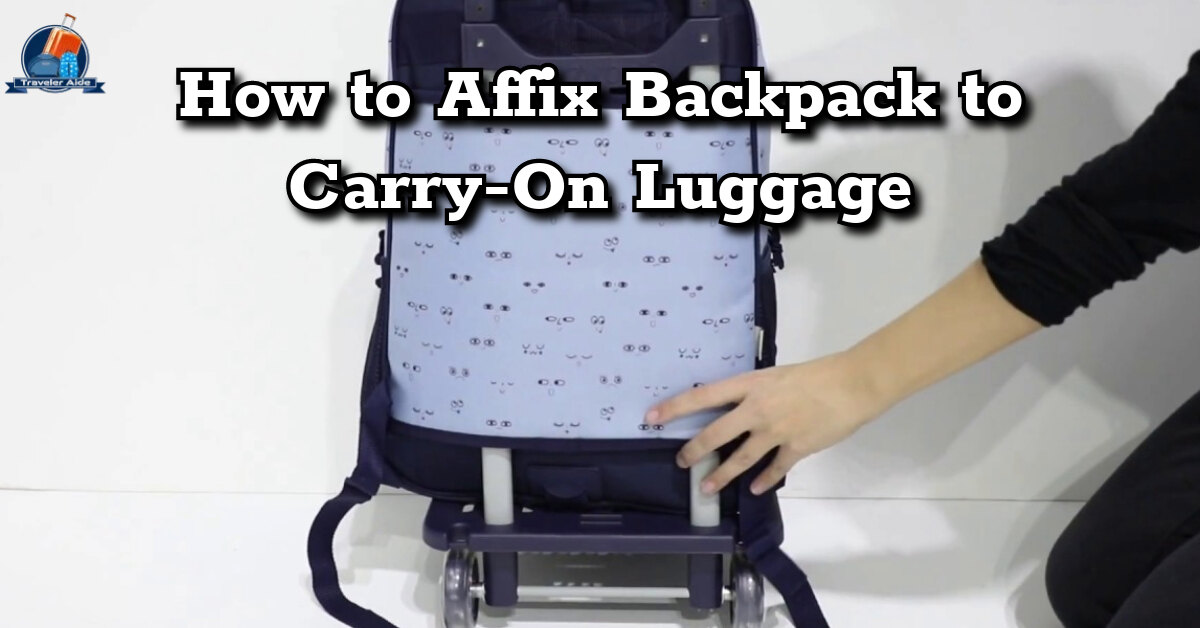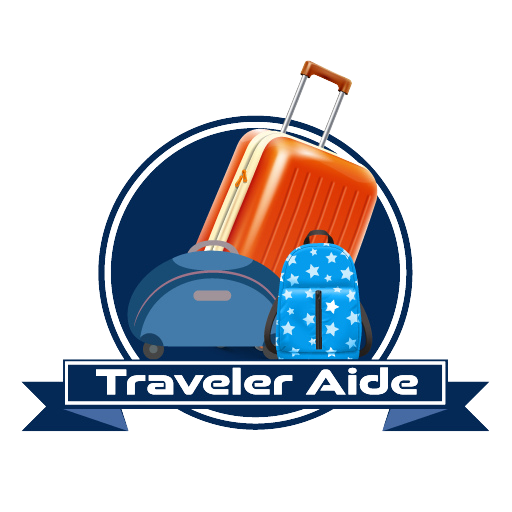Easy Travel ahead: How to Affix Backpack to Carry-On Luggage for quick and easy movement. Streamlined bags are essential for those who move around and want to keep things simple. There are many ways to do this, but one that stands out is to attach your bag to your carry gear. With this clever combination, you can move around without using your hands and carrying a lot.
Hello, I’m Dorothy E. Turner, and I will teach you how to attach a backpack to your carry-on luggage. I will tell you more related topics so that you can become an expert.
The main points of this article are:
- Why attaching your backpack to your carry-on luggage is helpful.
- How to attach your backpack to your carry-on luggage – 8 easy steps explained.
- When you attach your backpack to your carry-on luggage, you must distribute the weight evenly so that both bags are easy to manage when you travel.
- Attaching your bag to your carry-on offers tips on keeping your belongings safe so that your things are less likely to be lost or stolen.
- Finally, I’ll discuss Consider Buying A Matching Luggage Set.
So, let’s start reading to learn more about carry-on luggage.
Why Attaching Backpacks To Carry-On Luggage Is Important
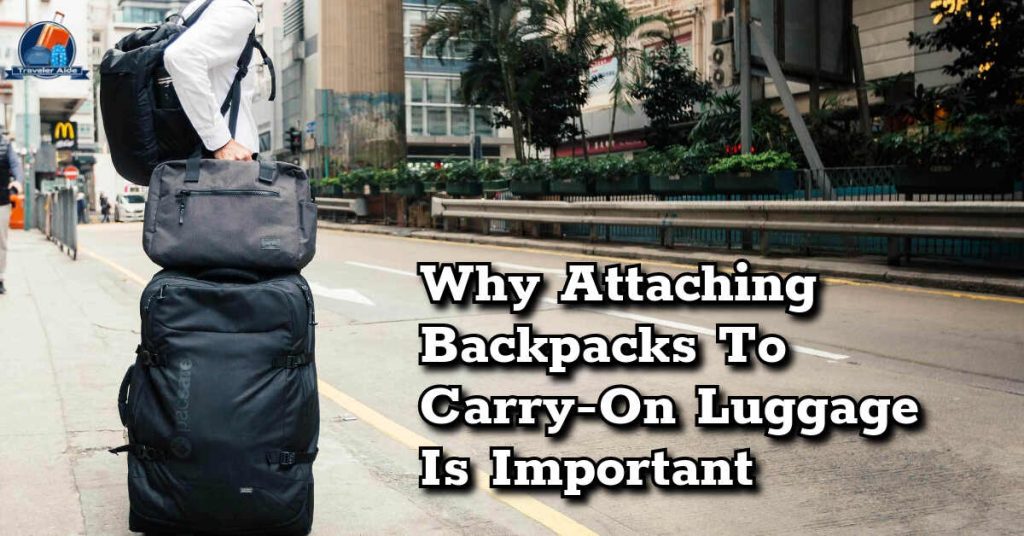
People who travel a lot know how important it is to connect your bag to your carry-on luggage:
Easy Moving
Putting your carry-on bags and backpack together works like a super team to help you get around. You can carry a few bags through airports and train stops. You don’t have to take many things separately, so you have more free time.
Keep Stuff Tidy
Putting your backpack on top of your bags keeps everything in order. You won’t have to dig through several bags to find your needs. Like having all your essential things in one place, that’s simple to get to.
Less Tiredness
When you’re traveling for a long time, carrying many bags alone can get really tiring. Putting your backpack on top of your other bags spreads the weight out better. That means less stress on your body and a more comfortable trip.
Stay Safe
Your things will be safer if you connect your bag to your carry-on gear. Things in one place and under your watch are less likely to get lost or stolen.
Simpler Travel
Putting your bag and luggage together makes getting from one place to another a lot easier. Getting into a cab, on a bus, or up and down stairs is much easier when you don’t have as many things to carry.
Follow Rules
There are limits on how many bags you can bring on some flights. You don’t have to worry about breaking any rules when you connect your bag to your (strap backpack to) luggage.
Grab What You Need
Getting to essential things on the go is easy when your backpack is safely linked to your bags. In addition, it keeps you stable and steady while you walk or wait in line.
Putting your backpack on top of your carry-on gear doesn’t just make things more accessible; it’s like having a trip companion who keeps your things safe, organized, and close at hand the whole time.
I’ll now go over how to attach a backpack to luggage in eight Practical Ways.
How To Attach Backpack To Luggage (8 Effective Methods)
Here are eight good ways to connect your bag to your luggage:
Using A Belt
If you can find a long, strong belt, weave it through the backpack’s shoulder straps or top handle. After that, put it around your carry-on bags and buckle it up tight. Make sure it fits well, and keep the two bags close together.
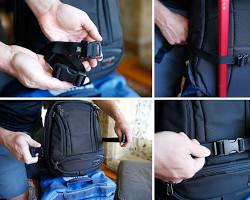
Use Luggage Straps
Dedicated suitcase straps are made with lengths to adjust and ways to keep them in place. Connect them to the handles or pinpoints on your carry-on bags and wrap them around your backpack to keep it safe. The straps can be used for many things and hold securely.
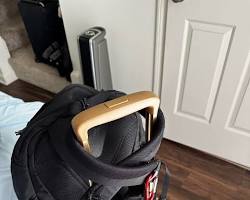
Employ Carabiner Clips
They are great for quickly attaching things. Latch them to the handles or rings of your bags and hook them to the loops or straps of your backpack. They make the link safe and are easy to take off when needed.
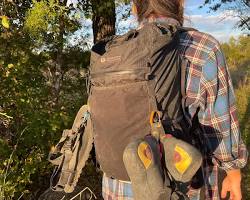
Use Bungee Cords Or Elastic Bands
Put wide rubber bands or bungee cords across the top of your bags. To ensure they fit well, hook them onto the straps or loops of your bag. You can change these cords and bands, and they keep your bags securely together.
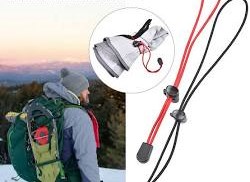
Use Integrated Straps Or Sleeves
Some new gear has attachments built right in. Look for straps or bands that are made to hold a backpack in place. You can slide your backpack through these holes or use the built-in straps to make it fit perfectly.
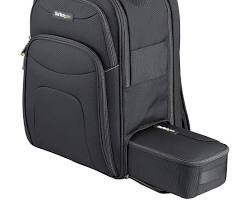
Use Compression Straps
Compression straps are often found on both bags and luggage. You can adjust these straps to fit around your bag and carry-on, pulling them together to keep them from moving. This method works exceptionally well for more giant bags.
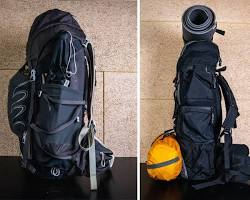
Using Hip, Chest, Sternum, Or Shoulder Straps
Use your bag with extra straps, like hip, chest, or shoulder straps. Put these straps around your body while wearing the backpack to keep it close to your carry-on bags.
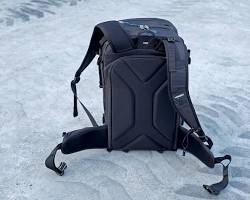
Ensure Secure Fastening
No matter which way you choose, make sure it’s correct. Make sure that all of the links are tight and safe. Gently shake the combined bags to see how stable they are and make any necessary changes to keep them from coming apart by chance while traveling.
Using these methods, there are different ways to safely connect your backpack to your (battery pack for) luggage so you can choose the one that works best for you and your bag. Try these techniques to see which works best for you and keeps you safe on your trip.
Simple Tips To Balance Weight Distribution
When you connect your bag to your carry-on gear, here are some easy ways to make sure the weight is evenly spread:
Heavier Items At The Bottom
Put heavy things near the wheels or the bottom of your carry-on bags. This setup helps keep the bag stable and stops it from becoming top-heavy, which keeps it more balanced.
Evenly Distribute Weight
Your bag and carry-on should carry a manageable amount of weight. Put some of your big things in one bag so you don’t get unbalanced or uncomfortable when moving.
Utilize Pockets And Compartments
Make use of the bags and sections in both your backpack and carry-on. Spread the things out properly in these sections to ensure the load is fair.
Keep Essentials Accessible
Keep things you use often or are essential in places that are easy to get to. This way, you don’t have to move the bags around repeatedly, and it helps keep things stable by reducing the amount of movement needed to get things.
Balance Left And Right
Try to spread the weight of your carry-on and bag out equally on both sides. This spread keeps your bags from leaning to one side, making moving around easier.
I’ll now discover the Safety Advice for Packing Luggage for Travel.
Safety Tips When Traveling With Luggage
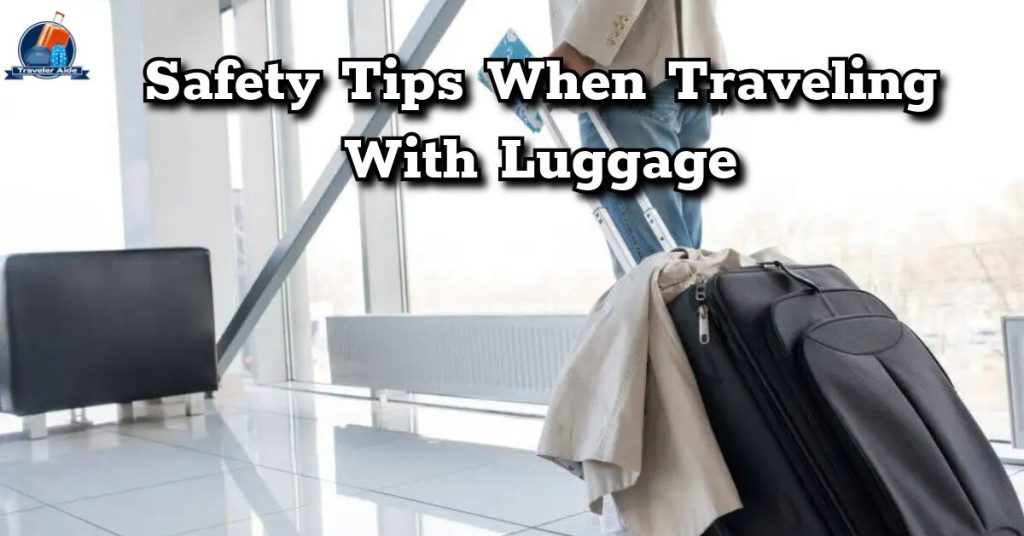
Keep these safety tips in mind when you’re moving with bags:
Use Secure Locks
Buy locks that the Transportation Security Administration (TSA) has approved. A unique feature on these locks lets TSA agents open them with a master key to check them out. This makes it less likely that your bags will get damaged. Locks help keep your things safe and stop thieves from taking them.
Tag Your Luggage
Put a tag on the outside of your bags with your name, phone number, and email address. This ID makes it easier for flight workers or others to contact you if your stuff gets lost or stolen while traveling.
Keep Valuables Close
Keep essential things in your carry-on or bag, like trip papers, tools, medicine, and jewelry that you value. This lowers the risk of losing or having your bags stolen because you usually keep your carry-ons for the whole trip.
Avoid Overpacking
Airlines have rules about how much luggage can weigh. If you put too much in your bags, the zippers or seams could break, and you could lose things. Stay within the weight limits. This will keep your things safe and prevent damage.
Inspect Baggage Condition
Check your bags for damage before you leave for your trip. Ensure the doors, handles, and wheels work correctly to avoid accidents or damage during transport.
Stay Vigilant In Crowded Places
Watch out for your bags in places with many people, like airports and tourist spots. Keep them close, and don’t leave them alone. This will lower the chance that someone will accidentally steal or lose them.
Be Aware Of Baggage Scams
Be wary of people who offer to help you carry your bags without being asked. Some people might try to distract you while someone else steals your things. Be careful, and don’t fall for these tricks.
Securely Attach Your Backpack
Make sure the link between your bag and your suitcase is strong. Ensure the clips are tight so your backpack doesn’t come off while moving.
Protect Against Pickpockets
Buy bags or backpacks that are hard to steal, like ones with secret pockets and materials that can’t be cut. Pickpockets will be less likely to steal your things if you wear your backpack in front of you in busy places.
Know Baggage Regulations
Learn about the airline’s rules and limits on bags before you go. Knowing this helps you pack correctly so that you won’t have any problems at security checks, and your trip will go smoothly.
With these safety tips, you can lower the risks of flying and ensure your bags and other things are safe during your trip.
Consider Buying A Matching Luggage Set
It’s easier to keep things in order and find your bags at the airport if your bags match. Most of the time, you can store them together when not in use to save room. You can be sure that bags that fit and are from the same brand or set are of good quality.
Another cool thing about them is that they often have extra bags or charging ports to help you on your trips. Having a set of bags that goes together makes flying and packing more accessible and more stylish!
Here are some frequently asked questions about attaching a Backpack to Carry-On Luggage.
FAQs On Affix Backpack to Carry-On Luggage
Can A Small Bag Be Connected To A Big Suitcase?
You can, of course! Putting a small bag on top of a big suitcase is easy with straps, clips, or belts made just for that purpose. You can carry both bags simultaneously, which is helpful in airports and other places.
How Should I Carry My Backpack?
For a comfortable carry, use both shoulder straps (on a purse). Make sure they fit well enough. So the weight is spread out, which is better for your back. Some bags with extra straps that can be used around the chest or hips can also be helpful.
What If It’s Too Big?
You can add something to the outside if what you want to bring is too big for your bags. Add extra straps or bungee cords to your bag’s top or sides to keep it in place. However, if it’s too big for the plane, you may need to split it or check it.
Do You Have To Pay To Bring A Bag On A Plane?
Most of the time, planes will let you bring a backpack for free as a personal item. But each flight may have rules about what you can get for free and how big or heavy it can be, so check their rules before you leave. You can be sure their bag stays within the free limit this way.
Last Advice
Making travel easier: attach your backpack to your carry-on. It helps you carry less weight, move quickly, stay organized, and feel safe while traveling.
Attach them properly, distribute the weight evenly, and stay safe. Using matching bags can make things easier and look nicer, too. Double-check airline rules about backpack sizes.
It’s not just for convenience; It’s like having a reliable travel buddy to keep your important things close. So, attach your bags, pack well, and enjoy your trip with confidence and smoothness! Safe travels!
You can comment if you know anything else; I will try to answer.
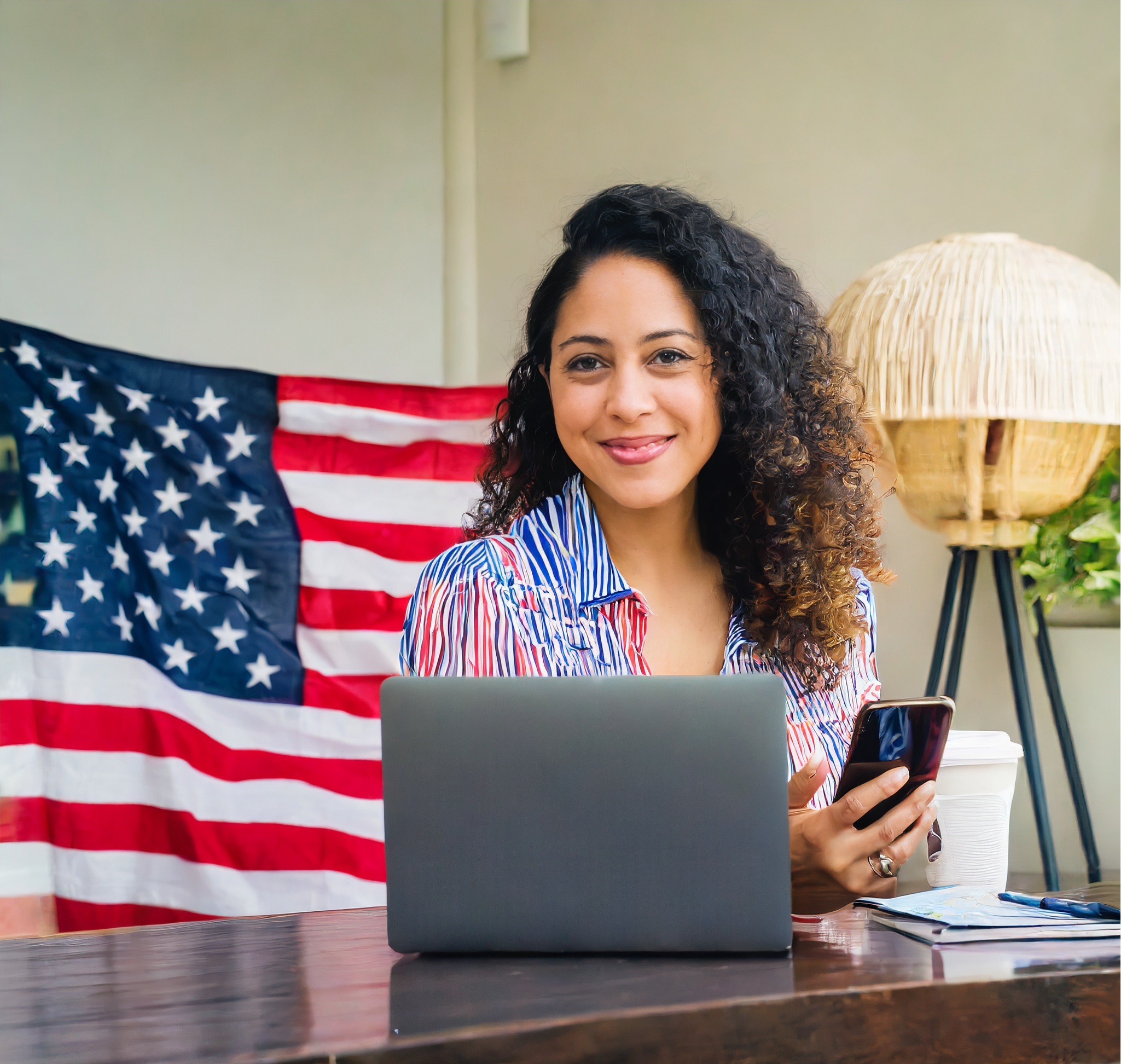
Hey, I’m Dorothy E. Turner! I’ve spent years exploring the world and diving deep into the travel scene. Along the way, I’ve developed a real knack for understanding what makes a great travel backpack. I’m passionate about sharing my expertise to help fellow travelers find the perfect backpack for their adventures.

